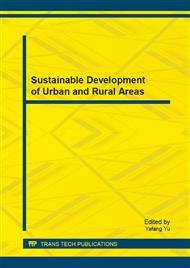[1]
Pengfei Huang, Yiwang Bao and Yan Yao, Influence of HCl corrosion on the mechanical properties of concrete, Elsevier – Science Direct, Cement and Concrete Research , 584-589(2005).
DOI: 10.1016/j.cemconres.2004.06.027
Google Scholar
[2]
Ha-Won Song, Velu Saraswathy, Corrosion monitoring of reinforced Concrete structures – A review, International journal of electrochemical science, No. 2, 1- 2 (2007).
Google Scholar
[3]
Tarun, R.N. and Singh, S. S A study on reinforcement corrosion and related properties of plain and blended cement concretes under different curing conditions, Elsevier – Science Direct, Cement & Concrete Composites 27, 449-461(2005).
DOI: 10.1016/j.cemconcomp.2004.05.006
Google Scholar
[4]
Suzuki, K., Ohno, Y., Praparntanatorn, S., and Tamura, H. Some phenomena of macrocell corrosion, Corrosion of Reinforcement in Concrete, Elsevier Applied Science, Wishaw, UK(1990).
Google Scholar
[5]
Saraswathy, V. and Song, H. W, Evaluation of a composite corrosion-inhibiting admixture and its performance in concrete under macrocell corrosion conditions, Elsevier – Science Direct, Cement and Concrete Research 31, 789-794(2001).
DOI: 10.1016/s0008-8846(01)00468-9
Google Scholar
[6]
Vidal,T. Castel, A. and Francois, R., Corrosion process and structural performance of a 17 year old reinforced concrete beam stored in chloride environment, Elsevier – Science Direct, Cement and Concrete Research 37 , 1551-1561(2007).
DOI: 10.1016/j.cemconres.2007.08.004
Google Scholar
[7]
Narayan Swamy, Fly ash and its use in concrete, The Indian Concrete Journal, April 2003, pp.975-977(2003).
Google Scholar
[8]
Salta, M.M., In: Swamy, R.N. editor., Influence of fly ash on chloride diffusion in concrete – Volume 2,. Sheffield Academic Press, 1994 pp.794-804(1994).
Google Scholar
[9]
Tae-Hyun Ha, Srinivasan Muralidharan, Jeong-Hyo Bae, Yoon-Cheol Ha, Hyun-Goo Lee, Kyung-Wha Park and Dae-Kyeong Kim Accelerated short-term techniques to evaluate the corrosion performance of steel in fly ash blended concrete, Elsevier - Science Direct, Building and Environment( (2005).
DOI: 10.1109/icpst.2004.1460064
Google Scholar
[10]
Naik, T.R., Singh, S.S. and Hussain, M. W Permeability of concrete containing large amount of fly ash, Elsevier – Science Direct, Cement and Concrete Research, 24: 913-922(1994).
DOI: 10.1016/0008-8846(94)90011-6
Google Scholar
[11]
Nmai, C.K., Farrington, S.A. and Bobrowski, G.S. 'Organic based corrosion inhibiting admixtures for reinforced concrete, Concr. Int. 14 (4) 45-51(1992).
Google Scholar
[12]
Nmai C.K., Multi-functional organic corrosion inhibitor, Elsevier – Science Direct, Cement & Concrete Composites 26 , 199-207(2004).
DOI: 10.1016/s0958-9465(03)00039-8
Google Scholar
[13]
Ormellese, M., Berra, M., Bolzoni, F. and Pastore, T Corrosion inhibitors for chlorides induced corrosion in reinforced concrete structures, Elsevier – Science Direct, Cement and Concrete Research, No. 36, pp.536-547(2006).
DOI: 10.1016/j.cemconres.2005.11.007
Google Scholar
[14]
Trepanier, S.M., Hope, B.B. and Hansson, C.M. ), Corrosion inhibitors in concrete: Part III. Effect on time to chloride-induced corrosion initiation and subsequent corrosion rates of steel in mortar, Elsevier – Science Direct, Cement and Concrete Research 31, 713-718(2001).
DOI: 10.1016/s0008-8846(01)00470-7
Google Scholar
[15]
Cigna, R., Mercalli, G., Peroni, L., Grisoni, U., Mader Influence of corrosion inhibitors containing aminoalcohols on the prolongation of service life of reinforced concrete, International conference on corrosion and rehabilitation of reinforced concrete structures, FHWA, Orlando(1998).
DOI: 10.1533/9781845692285.203
Google Scholar


